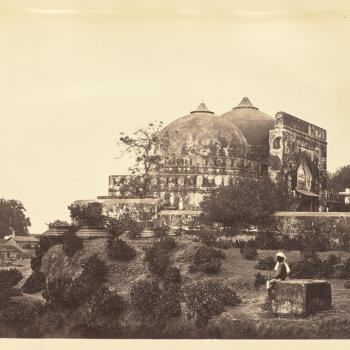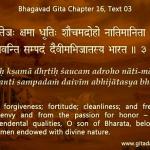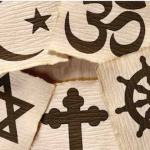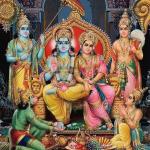Before beginning, I would like to clarify that the point of this post is not to target any one community. It is merely to point out that contrary to what some academics claim, there has indeed been much loss of ancient India’s heritage, specifically temples. To ignore this loss or try and whitewash this would be equivalent to holocaust denial. So this post is not an attempt to rev up hatred or revenge. This post is merely to remind all of us that horrible things have happened in the past, and the past should not be forgotten. Otherwise history tends to repeat itself. I am aware that I have not included sources here. I am just tidying them up and will edit this post soon with a list of sources. Let us begin!
Though there are many sources that say thousands of hindu temples have been destroyed, there are some western scholars like the American scholar Prof. Richard M. Eaton who are saying only 80 temples, those of political importance, were destroyed during the whole period of Islamic rule.
But in Aurangazeb’s own official chronicle, describing just one year of his rule, it is written that at least 132 temples were destroyed in 1679. He ruled for over 50 years in total.
It is recorded in a history authorized by his son, that Tipu Sultan had killed 10,000 Hindus and Christians and enslaved 7,000 of them in his wars against Travancore. The enslaved were carried away to Seringapatam, where they were circumcised, made to eat beef and forced to convert to Islam. 70,000 Coorgis were forcefully converted to Islam by Tipu Sultan – though it is said that this number may be exaggerated.
A statement by Swami Vivekananda – “When the Mohammedans first came we were said – I think on the authority of Ferishta, the oldest Mohammedan historian – to have been six hundred millions of Hindus. Now we are about two hundred millions.”
Descriptions of their campaigns
In Muhammad bin Qasim’s first successful foray into India (in 700AD, in the area of Sindh, Pakistan), “the temples were demolished, a general massacre endured for three days; prisoners were taken captive.” At another place, “the idols were broken, and mosques founded despite its voluntary surrender.” In another place, “all the men in arms were put to the sword, and the women and children carried away captive;” At Multan, “all men capable of bearing arms were massacred; six thousand ministers of the temple were made captive, besides all the women and children.”
Multan is a city in Pakistan. It’s original name is Mulasthana, and it was famous for a Shiva and a Sun temple.
Will Durant (1976), The Story of Civilization
A Few Quotes: “The Mohammedan Conquest of India is probably the bloodiest story in history. It is a discouraging tale, for its evident moral is that civilization is a precarious thing, whose delicate complex of order and liberty, culture and peace may at any time be overthrown by barbarians invading from without or multiplying within. The Hindus had allowed their strength to be wasted in internal division and war; they had adopted religions like Buddhism and Jainism, which unnerved them for the tasks of life; they had failed to organize their forces for the protection of their frontiers and their capitals.”
About Ghazni: He met the unprepared Hindus at Bhimnagar, slaughtered them, pillaged their cities, destroyed their temples, and carried away the accumulated treasures of centuries.
Each winter Mahmud descended into India, filled his treasure chest with spoils, and amused his men with full freedom to pillage and kill; each spring he returned to his capital richer than before.
At Mathura (on the Yamuna) he took from the temple its statues of gold encrusted with precious stones, and emptied its coffers of a vast quantity of gold, silver and jewelry; he expressed his admiration for the architecture of the great shrine, judged that its duplication would cost one hundred million dinars and the labor of two hundred years, and then ordered it to be soaked with naphtha and burnt to the ground. `Six years later he sacked another opulent city of northern India, Somnath, killed all its fifty thousand inhabitants, and dragged its wealth to Ghazni. Sometimes he spared the population of the ravaged cities, and took them home to be sold as slaves; but so great was the number of such captives that after some years no one could be found to offer more than a few shillings for a slave.”
According to one modern historian, Mahmud of Ghazni’s repeated attacks in northern India reduced its population by about 2 million, either because they were killed or carried away as slaves.
About Ghuri: In 1186 the Ghuri, a Turkish tribe of Afghanistan, invaded India, captured the city of Delhi, destroyed its temples, confiscated its wealth, and settled down in its palaces to establish the Sultanate of Delhi.
About Aibak: In one victory of this warrior (who had been purchased as a slave), “fifty thousand men came under the collar of slavery, and the plain became black as pitch with Hindus.” This is the person who built the Qutb Minar. An inscription at Qutb Minar describes how a mosque there, named Quwwat-il-Islam (glory of Islam), was built with the ruins of 27 Hindu and Jain temples.
Balban: He punished rebels and brigands by casting them under the feet of elephants, or removing their skins, stuffing these with straw, and hanging them from the gates of Delhi.
About Tughlak: He killed so many Hindus that, in the words of a Moslem historian, “there was constantly in front of his royal pavilion and his Civil Court a mound of dead bodies and a heap of corpses, while the sweepers and executioners were wearied out by their work of dragging “the victims” and putting them to death in crowds
From other sources
Malik Kafur: As a commander of Alauddin Khilji’s forces, Kafur led a series of expeditions in the southern part of India, against the Yadavas (1308), the Kakatiyas (1310), the Hoysalas (1311), and the Pandyas (1311)
Nadir Shah made a mountain of the skulls of the Hindus he killed in Delhi alone
Babur raised towers of Hindu skulls when he defeated Rana Sanga in 1527 and later he repeated the same horrors after capturing the fort of Chanderi.
Akbar ordered a general massacre of 30,000 Rajputs after he captured Chithorgarh in 1568.
The Bahmani Sultans had an annual agenda of killing a minimum of 100,000 Hindus every year.
Attack on Hampi by the Muslim Sultans of the Deccan: The city had a population of 3 lakh which was plundered by Sultanate army. The Vijaynagar Kingdom was founded by Harihara and Bukka, who had been enslaved by Muhammad Tughlaq. Tughlaq sent them to the Deccan to quell a rebellion there, and they themselves promptly revolted.
Kashmir: Around 1300, according to a medieval Muslim historian, in the reign of Sultan Sikandar, the Sultan issued a writ, ‘proscribing the residence of any other than Mahomedans in Kashmir; and he required that no man should wear the mark on his forehead (as worn by Hindus)… Lastly, he insisted on all golden and silver images (idols) being broken and melted down, and the metal coined into money. Many of the brahmins, rather than abandon their religion or their country, poisoned themselves; some emigrated from their native homes, while a few escaped the evil of banishment by becoming Mahomedans. After the emigration of the brahmins, Sikandar ordered all the temples in Kashmir to be thrown down… Having broken all the images in Kashmir, he acquired the title of the Iconoclast, Destroyer of Idols.”
Hindus Under the Islamic Kings
During the rule of the Sultans, many Hindus took refuge in mountains and forests. Ibn Battutah, traveling to India in the reign of Sultan Muhammad Tughlaq ( 1325-51) found near Multan, Hindu “rebels and warriors, who maintain themselves in the fastness of inaccessible mountains.”
Babur notes in his memoir, “neither grain for ourselves nor corn for our horses was to be had. The villagers, out of hostility and hatred to us, had taken to thieving and highway robbery; there was no moving on the roads… All the inhabitants had run away (to jungles) in terror.”
While hiding in the forest, many of these people formed desperate gangs who engaged in night-time robbery. Also, because these people had abandoned their fields, it led to many famines.
According to Badauni of Akbar’s court, Hindus often warded off attacks of Muslim armies from their jungle hideouts. Those who took to the forest, stayed there eating wild fruits, tree-roots and coarse grain if and when available. One modern historian writes: “millions of armed men, cultivators or otherwise, were its (government’s) rivals rather than subjects.”
Though Akbar banned the taking of slaves, raiding of villages and slave-taking continued unabated. One modern historian writes: “It became a fashion to raid a village or a group of villages without any obvious justification, and carry off the inhabitants as slaves”
When Jains in Gujarat built splendid temples, attracting many devotees, “Emperor Jahangir ordered them to be banished from the country and their temples to be demolished. Their idols were thrown down on the uppermost step of the mosque, so that it might be trodden upon”
After Aurangzeb reintroduced the humiliating jizyah tax for non-Muslims in 1679 (earlier abolished by Akbar in 1576), a great multitude of Hindus from all walks of life thronged to Delhi and laid a sit-in protest outside the royal palace. Aurangzeb set his elephants and horses upon them. ‘Many fell trodden to death under the feet of the elephants and horses’ and at length, ‘they submitted to pay the jizyah,’ wrote a writer of the court.
During campaigns, when Hindu women and children were enslaved, they became the property of Muslims and entered Islam by default. It is recorded by court chroniclers that hundreds of thousands of women and children were enslaved in each campaign. When those children and new children born to the women grew up to be adult Muslims in a few years, the males were drafted into the Muslim army for waging new holy wars against the Hindus, who had been their kinfolk and coreligionists a few years earlier. In the short time-span of a decade, these captured children had become the weapon for the Muslim state to wage new Jihad expeditions for extending the domain of Islam.
Slave-taking is thought to have helped swell the Muslim population in India like nothing else. Women, especially the young, were the major target of enslavement by Muslims right from the time of Prophet Muhammad.
Taxes on Hindus
Hindus had to pay jizyah, the poll tax for being a non-Muslim. But the main economic burden was kharaj, the land tax. During the reign of Sultan Alauddin Khilji (1296–1316), the peasants had literally become bonded slaves of the government, since up to 50–75% of the produce was taken away in taxes, mainly as kharaj. Even during the reign of Akbar, kharaj was fixed at ‘one-third, but in reality it came to two-thirds’ of the agricultural produce in Kashmir. In Gujarat, the peasants had to hand over three quarters of the produce in around 1629 in the reign of Emperor Shahjahan.
Under the rule of Hindu kings, it was a practice to reduce or eliminate tax entirely during bad agricultural years. But this practice was used patchily during Islamic rule. Many sultans auctioned land to bidders. The bidders would then have to pay the amount that they had bid every year to the sultan. But they were given a freehand in terms of revenue collection. Any revenue they collected over and above this bid amount was theirs. This lead to extortionist practices to squeeze tax amounts even during bad crop years. Similar practices were followed under the British through zamindars.
The second largest contribution to the Muslim population in India probably came from the coercive compulsion of the subjects to convert, so they could be relieved from the discriminatory taxes. European courtier Niccolo Manucci, who lived in India during the reign of Aurangzeb, says, “Many Hindus unable to pay (taxes) turned Muhammadan to obtain relief from the insults of the collectors”. Thomas Roll, the president of the English factory in Surat wrote that jizyah was exacted by Aurangzeb for the dual purpose of enriching the treasury and for “forcing the poorer sections of the population to become Muslims.”
Islam’s Impact on Universities
Pre-Islamic India had high standards in education, literature, science and medicine, and founded famous centers of learning, namely at Nalanda (427–1197), Taxila, Kanchi, Vikramasheela, Jagaddala and Odanthapura. Situated at the then Buddhist center of learning in today’s Bihar, the Nalanda University was one of the world’s first residential universities with dormitories for students. In its heyday, it accommodated over 10,000 students and 2,000 teachers. It had a huge nine-storey library, where meticulous copies of texts were produced and preserved. Nalanda was also the most global university of its time, attracting pupils and scholars from Korea, Japan, China, Tibet, Indonesia, Persia and Turkey.
In 1197, Bakhtiyar Khilji destroyed the University, slaughtered all of its monks, and burned its immensely rich library – 9 million manuscripts – which burnt for a few weeks. Prior to the Muslim conquest of India, many Muslim students from Baghdad came to Taxila University to study Medicine in particular. All these reputed universities were destroyed by Muslim invaders and rulers; they ceased to exist after the Muslim occupation of India.
On the impact of Islamic invasions on science and learning in India, said Alberuni, a medieval Islamic historian that Hindu sciences and learning had retired far away from the Muslim-occupied areas. During the relatively liberal rule of Akbar, Hindus had rebuilt thousands of temples, which also acted as Hindu schools. Later on, Aurangzeb, having noticed that Muslim pupils also attended those temple-schools, filling their minds with sinful kuffar (un-Islamic) teachings, ordered their destruction, thereby destroying the revived Hindu education system.
Many muslim rulers’ followed a deliberate policy of causing crushing impoverishment of the peasants, notes one historian, so that the populace would be too weak to resist or revolt. “The levies they (Hindus) had to pay were so crushing that one catastrophic harvest was enough to unleash famines and epidemics capable of killing a million people at a time. Appalling poverty was the constant counterpart of the conquerors’ opulence, including the splendor of palaces and feasts in Delhi.” India, under the Muslim rule, experienced “a series of famine, a fabulous death-rate…”














